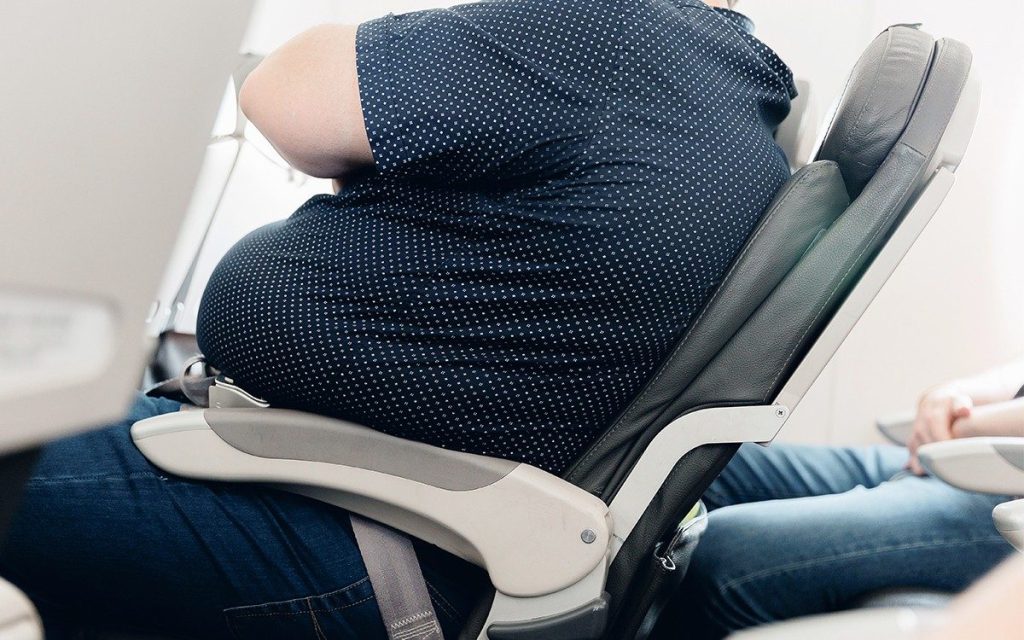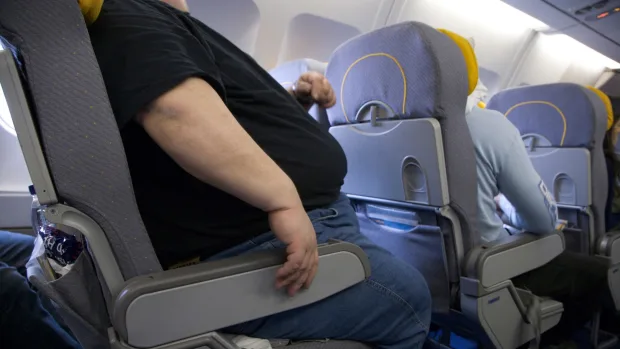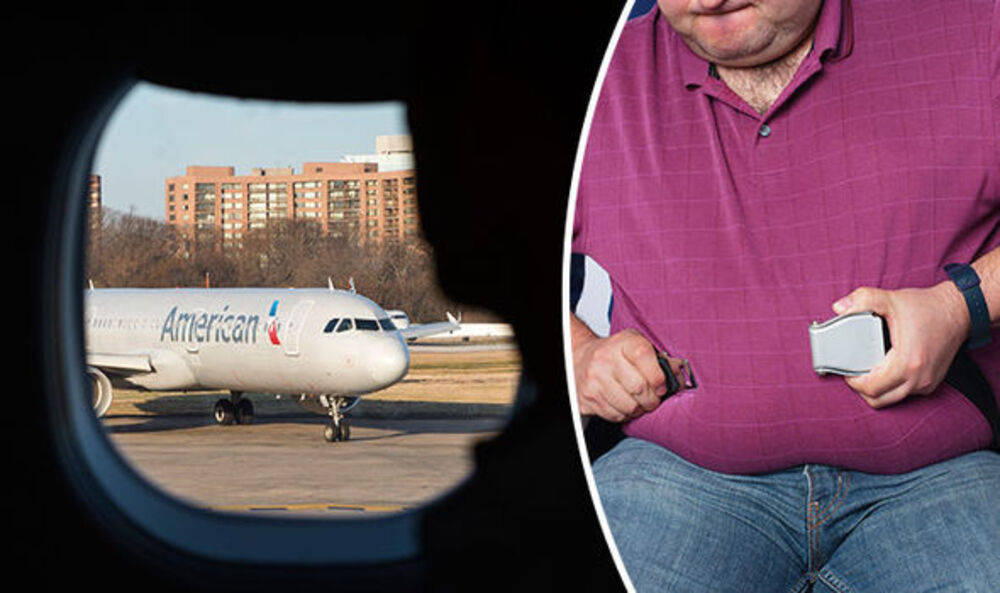As the number of fat passengers increases, airlines are temporarily forcing their customers to be weighed before boarding, the data from which is used in the computation of take-off weight to assure aircraft safety.
According to a new study conducted by RMIT University in Australia, obesity is becoming an issue in many countries and is likely to worsen. As a result, numerous airlines are now adjusting the average weights of male and female passengers on a regular basis in order to calculate the take-off weight more correctly.
This average weight modification is required for wide-body aircraft that can carry up to 300 people. For example, if the average weight of a passenger is inaccurate by one kilogram, an aircraft carrying 300 passengers may be carrying 300kg more than expected, and the take-off weight will be erroneous.
The average weight of male and female aviation passengers has been adjusted to 88.4kgs and 70.3kgs, respectively, from 81kgs and 69kgs in 2017, according to the US Federal Aviation Administration.
Air New Zealand had weighed over 10,000 passengers since June of this year, when Bangkok Airways opted to temporarily implement passenger weight measures before boarding. Finnair and Hawaiian Airlines have previously used the same measure. The measure is primarily transitory and voluntary, and it is dependent on passengers’ willingness to be weighed.
Bangkok Airways, for example, requests assistance from passengers by weighing them prior to boarding.
Fate passengers create a tonne of problems for airlines
Airlines face additional obstacles as the population grows larger, from seat sizes to weighing passengers before boarding.
Making calculations is essential when flying, but there is one that does not add up. Seats are becoming narrower as passengers become heavier, creating something of a flashpoint at 35,000 feet.
The average British man weighed 79kg in 1993, and the average British woman weighed 67kg. According to the NHS, by 2021, these averages had climbed to (85kg and 72kg.
This equates to nearly 2,200lb of weight on a flight with 189 seats, allowing for a couple of dozen youngsters on board and some empty seats. Passengers are literally a tonne heavier than they were 30 years ago. This has given airlines operating problems in more ways than one.
The average Boeing 737-800 has a maximum takeoff weight of roughly 160,000lb (80 tonnes), according to the US National Air and Space Museum.
After accounting for the weight of the jet itself (about 82,000lb; 41 tonnes) and the fuel (36,000lb; 18 tonnes), this leaves only 42,000lb or 21 tonnes for cargo, baggage, and passengers.
As passengers become fatter, airlines are looking for methods to save money elsewhere. Virgin Atlantic, for example, has changed its high class glasses to thinner glassware and altered its dinner trays to hold less dining carts.
They claim that losing one pound (0.45kg) of weight from a jet saved them 11,600 gallons (53,000 liters) of fuel each year, amounting to tens of thousands of dollars. To conserve weight, several airlines have eliminated in-flight magazines and bulky seat-back screens.
However, in their efforts to lower overall weight, airlines appear to have overlooked good adjustments that would make flying more comfortable for customers. In fact, the inverse is true.
The Telegraph reports, each airline has its own restrictions, but on average, plane seats are reducing in terms of both breadth and legroom as airlines try to pack as many seats as possible into their planes.
Squeeze on economy class seats
Seat width on the Boeing 747 and early Airbus jets was normally 18 inches in the 1970s and 1980s, increasing to 18.5 inches on the Boeing 777 in the 1990s and the Airbus A380 in the 2000s.
Seat widths in economy class on most modern aircraft, including Boeing 737s and Airbus A330s, are typically between 17 and 17.5 inches. Of course, business and first class have substantially larger seat sizes, and some airlines provide greater space in premium economy.
However, the squeeze on economy class seats is unusual, because seats are increasing bigger in most other public places. When Wembley Stadium reopened in 2007, the seats were 19.7 inches wide, as opposed to the 16.1 inches that football fans had previously endured.
Many theatres now post their seat widths online on their accessible pages, which became a big topic last year when London-based Danish comedian Sofie Hagen refused to play at any venue that did not.
Airlines didn’t get the memo, and it’s having a real-world impact on passengers.
The difficulties that plus-size travellers face
You may have noticed your elbows colliding with your seatmate more now than when you originally boarded the plane. However, smaller seats make flying extremely difficult for larger persons.
Kirsty Leanne, a plus-size travel expert, says there are several difficulties at 35,000 feet.
“I’m concerned that neither I nor the person next to me will be comfortable for the duration of the flight, which causes me a lot of anxiety,” she says.
Leanne checks if there are any seats with a vacant seat next to them when boarding an aircraft to ensure everyone is comfortable. She also requests a seatbelt extender, which some airlines gladly provide.
“Another source of concern is the restroom, which is usually quite small. “They are frequently unusable, and on a long flight, it can be a choice between staying hydrated and attempting to use a bathroom that you definitely do not fit into,” she explains.
Paying more for Being Fat
However, Leanne believes that refitting planes with more seats is not the solution.
“Southwest Airlines provides a refund on a second seat purchased if there are still empty seats available when the doors close.”
Something similar across the board would be fantastic, as it would allow people to feel more at ease when travelling, thus encouraging more passengers of size to fly.”
When boarding a flight, Leanne inquires whether there are any seats with an empty seat next to them to ensure everyone’s comfort; she also requests a seatbelt extender. Getty Images
During the epidemic, mask-wearing became a source of contention in the sky, but there are signs that personal space may become an issue in the future. Kirsty Leanne recalls a time when she was sat next to a passenger that made her feel uneasy.
“She made direct comments about me and my body size, but at the time, I was too shy to advocate and stand up for myself.” “I felt as though I didn’t deserve to fly.”
Many airlines have no formal policy, although others, including as Ryanair, easyJet, and KLM, propose that if you are unable to lower your armrest, you reserve an additional seat for your flight.
KLM and Air France both give a 25% discount on these extra seats. Others, like as Virgin and Tui, advise calling the airline before booking.
Eurowings is the most accommodating airline in Europe, allowing you to book an additional empty middle seat adjacent to your ticket for just €10, provided there is room on the aircraft.









